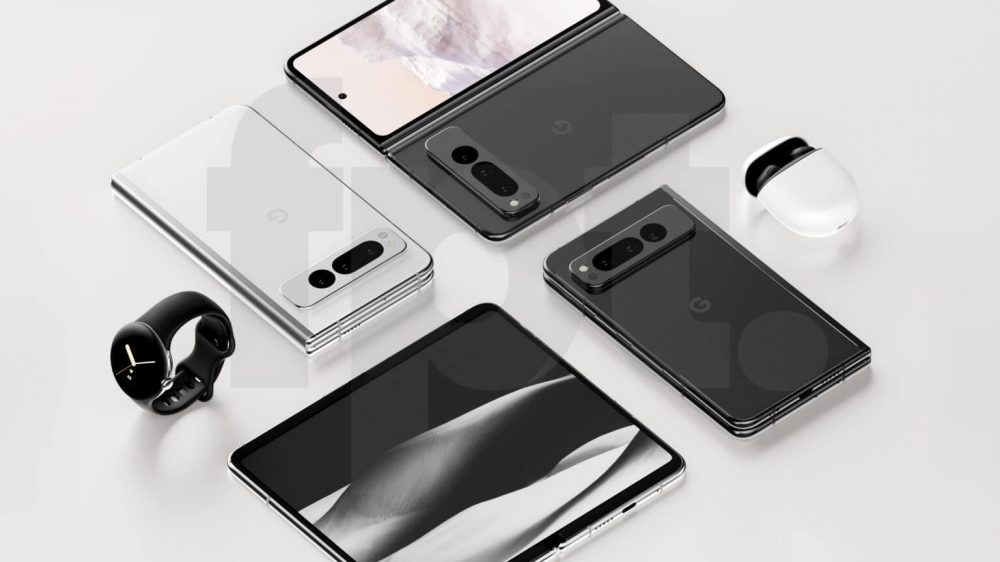
Now that we’ve gotten our first plausible look at next year’s Pixel Fold, let’s recap everything we’ve learned about Google’s first foldable Pixel — or more accurately, its third — over the last few years.
With the advent of the Samsung Galaxy Fold in 2019, most every Android device maker began working to craft its own take on the idea of a foldable phone. There have been flip-style designs like the Motorola Razr and hinged dual-screen devices like the Surface Duo, but many are seeking to replicate the success of the Galaxy Z Fold series.
To make today’s world of folding smartphones possible, Google has been steadily building support for foldables in Android since at least 2018. In time, the rise of foldables revealed the ways Android was still far better on phones than tablet-sized screens. Year over year, Android improved, particularly with this year’s Android 12L, catered to “large screens” of all kinds. Android 13 further improved on the ideas added in 12L.
Now Android apps can have “continuity” when switching from a smaller screen to a larger one. Switching between apps has become a breeze, thanks to a new task bar. Multitasking has been given a once-over too, with new “app pairs.”
All the while, Google has been quietly — or perhaps not so quietly — at work on a foldable of its own. Back in 2019, then-head of the Pixel division, Mario Queiroz confirmed that the company was “prototyping” foldable phones. A year later, we exclusively reported that Google had a more tangible foldable, codenamed “Passport,” which was scheduled to release in “Q4 2021” alongside the Pixel 6.
Details about this first foldable trickled out through 2021, with reports indicating that the Pixel Fold would have a 7.6-inch screen from Samsung, complete with a 120Hz refresh rate. Analysts were confident that Google would unveil this “Passport” device as the first Pixel Fold in October 2021. Our team even found the model number for the Japanese variant of this phone, pointing to a global release.
After that year’s Made by Google came and went without even a teaser of a Pixel Fold, our team found evidence confirming a foldable was now on track for 2022. Along the way, Google had canceled its plans for “Passport” and moved on to a new device, codenamed “Pipit.”
This second iteration of the Pixel Fold was poised to bring the same Google Tensor chip as used in the Pixel 6. However, unlike Google’s traditional flagship, this foldable was going to continue using the same dated cameras found in the Pixel 5.
We even got a minor sneak peek at this second attempt at the Pixel Fold, thanks to the Android 12L beta. From a pair of included animations, we learned that “Pipit” would be more stout in its design by comparison to the Galaxy Z Fold series, closer to that of the Oppo Find N (not that that’s a bad thing). Notably, those early animations do still bear a striking resemblance to the latest Pixel Fold renders.
However, just as momentum began to build around this second attempt at a Pixel Fold, particularly with the release of Android 12L, Google delayed the foldable once again. We believe this was around the time that the company again shifted focus, moving from “Pipit” to the third iteration, codenamed “Felix.”
It seems this version of the Google Pixel Fold is now locked in — or at least far enough along to have more fleshed out details that led to this recent leak of renders, pricing, and a supposed launch window. As you’d expect, the core upgrade is a switch to the latest Tensor G2 chip, with all the speed and efficiency improvements that come with it.
Unlike Google’s previous attempts, the Pixel Fold is now poised to bring the kind of high-end mobile camera you’d expect from the Pixel series. According to Android researcher Kuba Wojciechowski, the Pixel Fold is likely to bring the Sony IMX787 (64MP, 1/1.3-inch size) sensor for its main photography.
On paper, that main camera hardware should be on-par or slightly better than what’s used in the Pixel 6 and Pixel 7 series. You’ll reportedly also find the typical accompaniment of telephoto, ultrawide, and front-facing cameras.
That said, you likely won’t make much use of the front-facing camera when taking selfies on the Pixel Fold. Our APK Insight team found signs that Google Camera will let you take selfies with the full-quality main camera while previewing from the small outer screen, matching a similar feature that has long been in place on the Galaxy Z Fold series and similar foldables over the years.

Speaking of, the outer screen should measure in with a resolution of 1080 x 2100, while the 7.6-inch inner screen should be 1840 x 2208. Unlike the Pixel 7, neither of these screens will include an under-display fingerprint reader. Instead, whether the Pixel Fold is open or shut, you’ll make use of a fingerprint reader embedded in the lock button, much like Samsung’s foldables.
The Pixel Fold has clearly had a long journey towards release, and things are certainly looking up if these latest leaks turn out to be fully accurate. In any case, it’s probably for the best that Google gave this particular device so much time to bake.
Foldables are, despite many improvements, still more prone to damage than traditional form factors. On top of that, Google’s hardware quality with Pixel improved quite dramatically with the Pixel 7 series, giving a better foundation for the Pixel Fold to really thrive against the competition.
More on Pixel:
- This could be a sneak peek at Pixel Tablet software in action
- Pixel 6 vs. Pixel 7: Smaller but now even better [Video]
- How to import and edit your Pixel’s RAW photos with Adobe Lightroom
Add 9to5Google to your Google News feed.
google-news
Author: Kyle Bradshaw
Source: 9TO5Google



